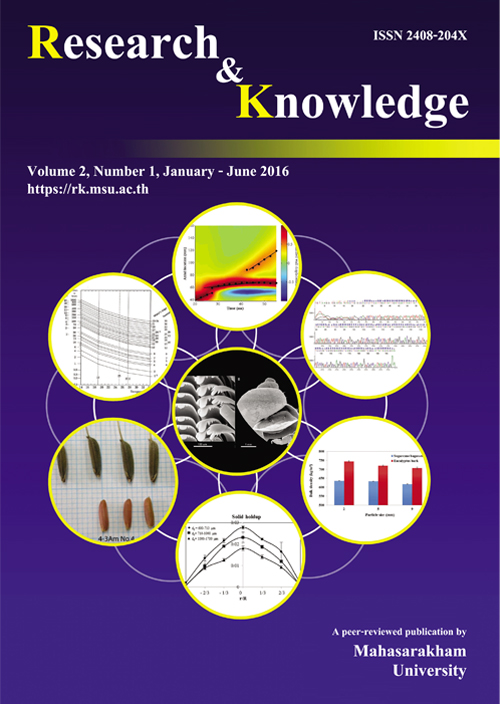Quantum theory of matter in bulk: Modern treatment
Keywords:
Quantum theory of matter in bulk, fundamental role of the Pauli exclusion principle against collapse, large extension of matterAbstract
A systematic mathematical modern presentation is given, providing in a direct way the underlying technical details, to show how quantum theory, with the Pauli exclusion principle, has, over the years, solved the problem of why matter in bulk is stable and occupies so large a volume.
References
Dolbeault, J., Laptev, A. and Loss, M. E. 2008. Lieb-Thirring inequalities with improved constants. Journal of the European Mathematical Society10, 1121-1126.
Dyson, F. J. 1967. Ground-state energy of a fi nite system of charged particles. Journal of Mathematical Physics. 8, 1538-1545.
Dyson, F. J. and Lenard, A. 1967. Stability of matter I. Journal of Mathematical Physics 8, 423-434.
Ehrenfest, P., Ansprache zur Verleihung der Lorentz medaille an ProfessorWolfgang Pauli am 31 Oktober 1931. (Address on award of Lorentz medal to Professor Wolfgang Pauli on 31 October 1931). In Klein, M. J. (Editor), Paul Ehrenfest : Collected scientifi c papers, North-Holland, Amsterdam (1959) p. 617. [The address appeared originally in P. Ehrenfest, Versl. Akad. Amsterdam 40 (1931) 121.
Federbush, P. 1975. A new approach to the stability of matter. Journal of Mathematical Physics 16, 347-351. Graf, G. M. 1997. Stability of matter through an electrostatic inequality. Helvetica Physica Acta70, 72-79.
Hundertmark, D., Laptev, A. and Weidl, T. 2000. New bounds on the Lieb-Thirring constants. Inventiones Mathematicae 140, 693-704.
Lenard, A. and Dyson, F. J. 1968. Stability of matter II. Journal of Mathematical Physics 9, 698-709.
Lieb E. H. and Thirring W. E. 1975. Physical Review Letters 35, 687-689; [35 (1975) 1116(E); Thirring,W. E. (Ed.). The Stability of Matter: From Atoms to Stars, Selecta of E. H. Lieb (Springer, Heidelberg, 2005).
Lieb, E. H. 1979. The 5/3 law for bosons. Physics Letters 70A, 71-73.
Manoukian, E. B. 2013.Why matter occupies so large a volume?. Communications in Theoretical Physics 60, 677-686.
Manoukian, E. B. and Muthaporn, C. 2002. The collapse of “bosonic matter”. Progress of Theoretical Physics 107, 927-939.
Manoukian, E. B., Muthaporn, C. and Sirininlakul, S. 2006. Collapsing stage of “bosonic matter”. Physics Letters 352A, 488-490.
Manoukian, E. B. and Muthaporn, C. 2003a. 5/5 law for bosons for arbitrary . Progress of Theoretical Physics110, 385-391.
Manoukian, E. B. and Muthaporn, C. 2003b. Is “bosonic matter” unstable in 2D?. Journal of Physics A: Mathematical & General 36, 653-663.
Manoukian, E. B. and Sirininlakul, S. 2005. High-density limit and infl ation of matter. Physical Review Letters 95(190402), 1-3.
Manoukian, E. B. and Sirininlakul, S. 2004. Rigorous lower bounds for the ground state energy of matter. Physics Letters 332A, 54-59; [337A, (2004) 496(E).
Muthaporn, C. and Manoukian, E. B. 2004a. 2 law for bosons in 2D. Reports on Mathematical Physics 53, 415-424.
Muthaporn, C. and Manoukian, E. B. 2004b. Instability of “bosonic matter” in all dimensions. Physics Letters 321A, 152-154.
Schwinger, J. 1961. On the bound states of a given potential. Proceedings of the National Academy of Sciences U.S.A. 47, 122-129.
Teller, E. 1962.On the stability of molecules in the Thomas-Fermi theory. Reviews of Modern Physics 34, 627-631.
Tomonaga, S.-T. (Translator T. Oka). 1997. The Story of Spin. University of Chicago Press, Chicago. Preface. Wightman, A. S. et al. 1991. Studies in Mathematical Physics. Princeton University Press, Princeton, New Jersey, PP. 269-303.
Downloads
Published
How to Cite
Issue
Section
License

This work is licensed under a Creative Commons Attribution-NoDerivatives 4.0 International License.







